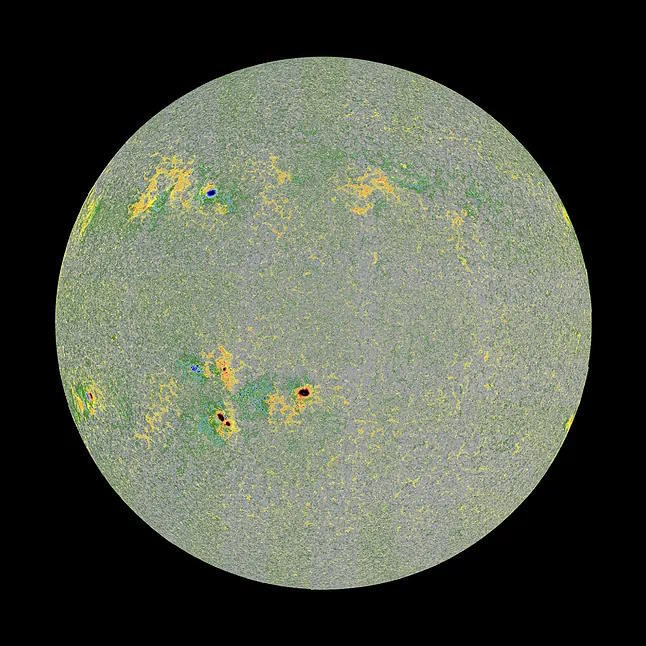On March 22, 2023, the Solar Orbiter spacecraft positioned itself at less than 74 million kilometers. It may seem like a large distance, but when it comes to approaching our star, it is very close. In order to get closer to the Sun, this spacecraft launched into space in 2020 with six scientific instruments was shielded with a titanium heat shield and coated with an innovative material called SolarBlack, which absorbs heat and prevents it from entering the interior. The observations and images taken by this intrepid spacecraft from the European Space Agency (ESA) and NASA during this approach have been published on Wednesday and constitute the highest resolution images of the visible surface of the Sun (photosphere) obtained to date.
These were taken with its PHI instrument (Polarimetric and Helioseismic Imager) which, in addition to capturing images in visible light, measures the direction of the magnetic field and maps the speed and direction at which material moves across the surface.
These photosphere measurements made by the PHI instrument can be directly compared with a new image of the Sun's outer atmosphere (the corona) obtained from high-resolution images taken on the same day in March 2023 by another of its instruments - the Extreme Ultraviolet Imager (EUI). The EUI captures images of the Sun in ultraviolet light.
An image of the solar corona in ultraviolet light taken by the EUI instrument on March 22, 2023. ESA & NASA/Solar Orbiter/EUI Team
"The Sun's magnetic field is key to understanding the dynamic nature of our star, from the smallest to the largest scales. These new high-resolution maps from the Solar Orbiter's PHI instrument show in great detail the beauty of the Sun's surface magnetic field and its flows," explains Daniel Müller, project scientist of the Solar Orbiter. He adds, "they are crucial for inferring the magnetic field in the hot solar corona, from which our EUI instrument is obtaining images."
The image taken in visible light shows the content of the Sun's surface: hot and bright plasma (charged gas) that is constantly in motion. Almost all of the Sun's radiation is emitted from this layer, which has a temperature between 4,500 and 6,000 °C.
However, for ESA scientists, the most striking aspect of the images are the sunspots. In the visible light image, they appear as dark spots, or holes on an otherwise smooth surface. This is because sunspots are cooler than their surroundings and therefore emit less light.
An image of the Sun captured in visible light by the PHI instrument, where sunspots are visible. ESA & NASA/Solar Orbiter/PHI Team
The PHI magnetic map, or magnetogram (the image that opens the article), shows that the Sun's magnetic field is concentrated in sunspot regions. The intensity of the magnetic field explains why the plasma inside sunspots is cooler.
The speed and direction of material movement on the Sun's surface is reflected in the PHI velocity map. Blue indicates movement towards the spacecraft, while red indicates movement away from it.
A map of material velocity across the visible surface of the Sun.
Being so close to the Sun, each high-resolution image taken by PHI and EUI only covers a small part of the Sun. After taking each individual image, the spacecraft had to tilt and rotate until images of each part of the Sun's face were obtained.
To obtain the images of the complete disk presented here, all captures taken over a period of more than four hours were stitched together as a mosaic.
